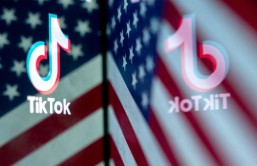China's capital Beijing has raised their pollution alert system to the "orange" level on Friday, as the city braces itself for heavy smog that is predicted to last for three days.
The orange level is the second highest alert level in the four-tiered alert system imposed by Beijing to curb the city's pollution rates. Under this alert level, schools, including kindergarten centers, are required to postpone any outdoor class activity.
According to a Reuters report, inspectors have already been distributed to look into factories and other establishments across Beijing to see if all of them are following emission rules and guidelines. However, the orange alert level does not require schools to suspend classes and state cars to keep off the road. These provisions are under the red alert level.
The Chinese government has been facing criticism due to their failure to come up with concrete efforts to decrease the pollution around Beijing. Data from the U.S Embassy revealed that the Chinese capital clocked in at 500 for the rate of PM2.5 particles. These particles have diameters which measure 2.5 micrometers and are considered as the most dangerous air pollutants. The U.S Environmental Protection agency says that PM2.5 levels should be kept fewer than 300; levels above that are considered as dangerous.
On Friday, heavy smog was already observed in the city. Forecasters claimed that the smog will be present for three days and encouraged residents not to use their cars temporarily.
The four-tiered system was first introduced October 2013 along with other policies ordering people to start cleaning up their environment. Beijing's government has also started projects which help fight pollution and encouraged courts to impose stricter punishments, including the death penalty for severe cases.
On Friday, the public's negative attitude towards Beijing's pollution control peaked when a Chinese military expert became the subject of online scrutiny. The said expert was bashed after he suggested that the city's thick smog could be used as a tactical defense in the event of a laser attack from the U.S military.








